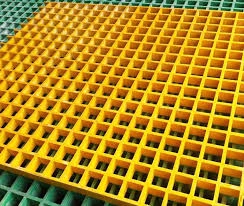loading...
- No. 9, Xingyuan South Street, Dongwaihuan Road, Zaoqiang County, Hengshui, Hebei, China
- admin@zjcomposites.com
- +86 15097380338
- Welcome to visit our website!
fibreglass reinforcement bar
The Advantages of Fibreglass Reinforcement Bars
Fibreglass Reinforcement Bars (FRP) have emerged as a revolutionary alternative to traditional steel reinforcement bars in the construction industry. As the demand for durable, lightweight, and cost-effective materials continues to rise, FRP bars are gaining traction in various applications, from small-scale residential projects to expansive industrial structures. This article delves into the benefits of fibreglass reinforcement bars, their applications, and the technology behind them.
What are Fibreglass Reinforcement Bars?
Fibreglass Reinforcement Bars are composed of a mixture of fibreglass strands and a polymer resin. This composite material results in a product that is lightweight yet significantly stronger than steel when it comes to tensile strength. The manufacturing process involves aligning the glass fibres and embedding them in a resin matrix, which provides excellent structural integrity and resistance to environmental factors.
Key Benefits of FRP Bars
1. Corrosion Resistance One of the most significant advantages of FRP bars is their resistance to corrosion. Unlike steel bars, which can rust and deteriorate when exposed to moisture and certain chemicals, fibreglass bars do not suffer from oxidation. This quality makes them ideal for use in harsh environments, such as coastal areas or places where de-icing salts are used.
2. Light Weight FRP bars are substantially lighter than their steel counterparts, often weighing about one-quarter of steel. This feature enables easier handling and transportation, reducing the labor costs associated with installation. Moreover, lighter materials can lead to a reduction in the overall weight of structures, which could positively affect earthquake resistance and foundation costs.
3. Enhanced Durability The lifespan of FRP bars is typically longer than that of traditional steel. They can withstand extreme temperatures and adverse weather conditions without significant degradation. This enhanced durability can lead to lower maintenance costs and longer intervals between repairs for structures.
fibreglass reinforcement bar

4. Non-Magnetic and Non-Conductive FRP bars are non-magnetic and non-conductive, making them an excellent choice in applications where electromagnetic interference is a concern or where electrical conductivity needs to be minimized. This characteristic is particularly beneficial in the construction of tunnels, bridges, and buildings in sensitive environments.
5. Design Flexibility The manufacturing process for fibreglass bars allows for variations in shape and size, enabling architects and engineers to design structures that are both functional and aesthetically pleasing. The versatility of FRP bars means they can be tailored to meet specific project requirements, providing additional design options.
Applications of Fibreglass Reinforcement Bars
Fibreglass Reinforcement Bars are being utilized in numerous construction applications. They are increasingly popular in bridge construction, where their corrosion resistance and tensile strength can enhance the longevity of the structure. In addition, FRP bars are often employed in waterfront structures such as piers and marinas, where they are exposed to saline environments.
Moreover, they find use in industrial facilities, wastewater treatment plants, and anywhere that exposure to aggressive chemicals is a concern. In addition to these applications, the sports and leisure industry has embraced fibreglass reinforcement as a reliable choice in the construction of athletic facilities and swimming pools.
Conclusion
The innovation surrounding Fibreglass Reinforcement Bars places them at the forefront of modern construction materials. As we continue to prioritize sustainability and durability in building practices, FRP bars exemplify how advanced materials can provide real-world solutions to traditional challenges. By integrating fibreglass bars into construction projects, we pave the way for more resilient structures that not only meet the demands of today but are also prepared for the challenges of the future. As the industry continues to evolve, FRP is poised to play a significant role in the ongoing development of safe, efficient, and durable construction practices.
-
Premium FRP Handrail for All ApplicationsNewsAug.29,2025
-
Low Maintenance FRP Mini Mesh Grating ProductsNewsAug.29,2025
-
Innovative FRP Square Tubes for Modern Industrial SolutionsNewsAug.29,2025
-
FRP Water Storage Tanks Wholesale Solutions for Bulk BuyersNewsAug.29,2025
-
FRP Molded Grating Solutions for Diverse Industrial ApplicationsNewsAug.29,2025
-
Construction Advancements Through FRP Pultruded ProfilesNewsAug.29,2025
-
Why Choose FRP Railings, Guardrails, and Handrail Systems?NewsAug.29,2025
